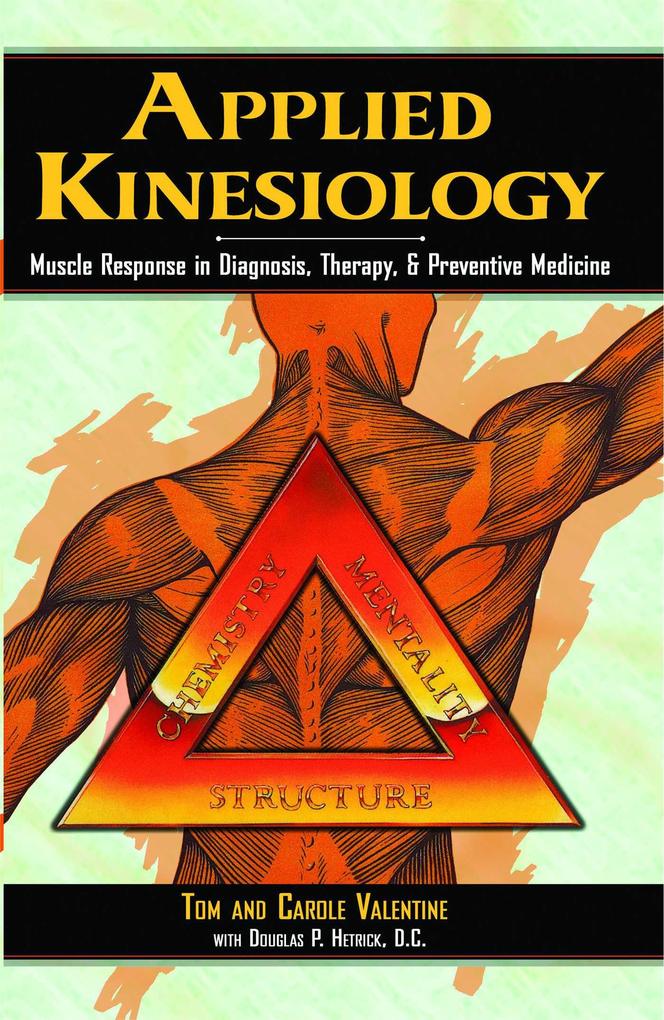Bücher versandkostenfrei*100 Tage RückgaberechtAbholung in der Wunschfiliale
10% Rabatt10 auf Toniebox 1, Figuren & Zubehör mit dem Gutscheincode: TONIE10
Jetzt einlösen
mehr erfahren
Zustellung: Di, 30.09. - Mo, 06.10.
Versand in 2 Wochen
VersandkostenfreiBestellen & in Filiale abholen:
HEALTH / BODYWORK Applied kinesiology, a noninvasive tool for health diagnosis and treatment, has been used by chiropractors, naturopaths, physical therapists, and other medical professionals for nearly half a century. Applied kinesiology teaches that our health depends on a balance of the structural, chemical, and mental/emotional dimensions of the body, and it utilizes these interrelationships in diagnostic techniques. Using this "holistic triad" approach, applied kinesiologists test the strength of specific muscles to determine the working health of the glands, organs, and bones as well as the nervous, circulatory, and lymphatic systems. The list of health problems that applied kinesiology can successfully address is impressive and still growing. Practitioners of applied kinesiology have a detailed knowledge of muscle movements and their relationship to the many complex systems of the body. Authors TOM and CAROLE VALENTINE, working closely with chiropractors and applied kinesiologists Douglas Hetrick and David Walther, explain how applied kinesiology tests muscles for a weak or strong response and thereby pinpoints the underlying causes of a health problem at its early stages, successfully addressing chronic and metabolic problems that have resisted all other treatment.
Inhaltsverzeichnis
1. Introducing Applied Kinesiology
2. The Triangle of Health: Structure, Chemistry, Mentality
3. What Applied Kinesiology Can Do for Your Family
4. Your First Kinesiology Examination
5. Checking Your Glands and Organs
6. Testing Your Bones and Muscles
7. Proprioceptors-Muscle Communicators
8. Body Organization: Right/Left Brain
9. Nutrition, Polarity and Ongoing Research
10. How to Choose an AK Physician
Index
2. The Triangle of Health: Structure, Chemistry, Mentality
3. What Applied Kinesiology Can Do for Your Family
4. Your First Kinesiology Examination
5. Checking Your Glands and Organs
6. Testing Your Bones and Muscles
7. Proprioceptors-Muscle Communicators
8. Body Organization: Right/Left Brain
9. Nutrition, Polarity and Ongoing Research
10. How to Choose an AK Physician
Index
Produktdetails
Erscheinungsdatum
01. Oktober 1985
Sprache
englisch
Auflage
Original edition
Seitenanzahl
160
Autor/Autorin
Carole Valentine, Tom Valentine
Verlag/Hersteller
Produktart
kartoniert
Gewicht
204 g
Größe (L/B/H)
210/142/9 mm
ISBN
9780892813285
Entdecken Sie mehr
Bewertungen
0 Bewertungen
Es wurden noch keine Bewertungen abgegeben. Schreiben Sie die erste Bewertung zu "Applied Kinesiology" und helfen Sie damit anderen bei der Kaufentscheidung.









